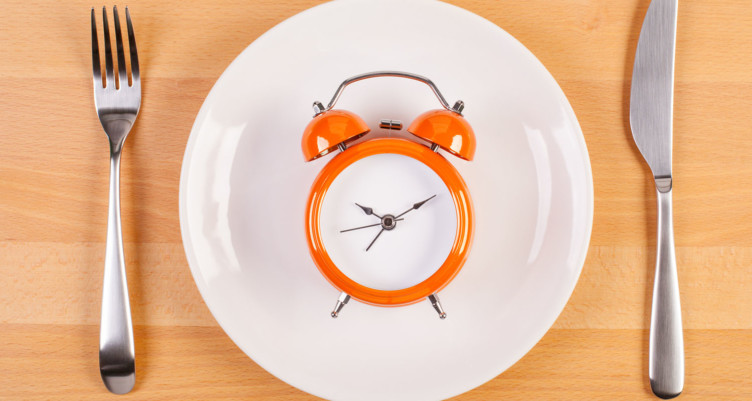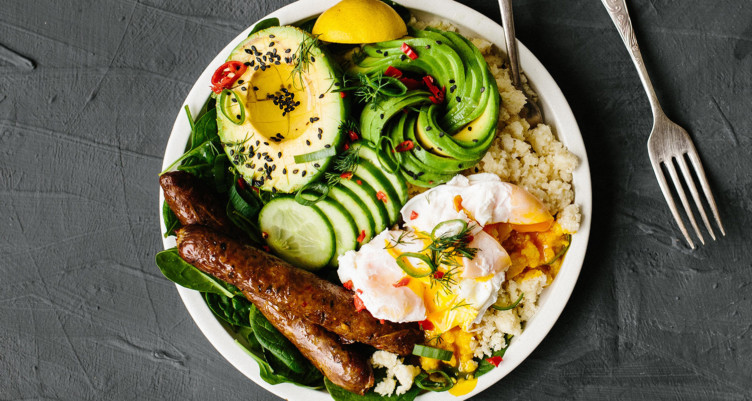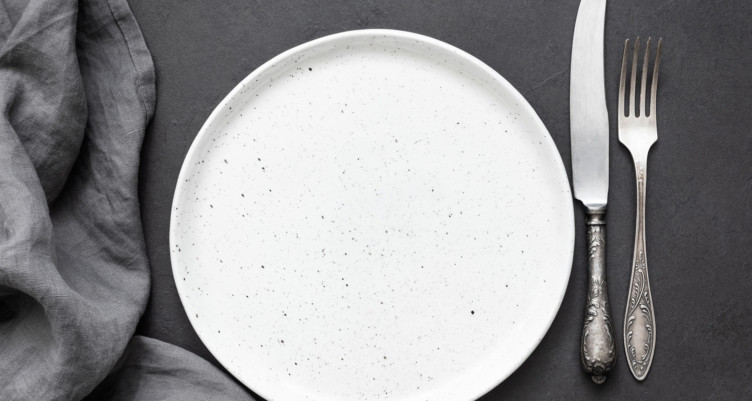Types of Fasting Diets and How to Choose the Right One

- Fasting diets can help you manage your weight, increase mental clarity and reduce your risk for disease, simply by changing when you eat.
- You can incorporate fasting into any diet, but more structured options are also available. Types of fasting diets include 16:8 intermittent fasting and OMAD.
- The best fasting diet is the one that works best with your lifestyle. Below, you’ll find tips on how to choose the right plan for you.
Fasting isn’t just a scientifically proven way to manage your weight.[1] Different types of fasting diets also help your body remove cellular waste and even improve your mood.[2][3] From lowering your risk for disease to improving memory, you can enjoy loads of fasting benefits just by changing when you eat.
Fasting can fit into any diet—but if you need structure, you have options. Depending on your eating habits and health goals, you’ll find a style that fits your routine. Keep reading to learn about some of the best fasting diets and how to get started.
What are fasting diets?

Though there’s no one-size-fits-all approach to fasting diets, they typically include a period of time when you’re fasting—abstaining from eating or drinking anything with calories—and a period of time when you’re eating, sometimes focused on specific food groups.
With this type of dieting, you might skip breakfast a few times per week, or you might limit your eating window every day. It all depends on what works for you.
Everyone responds differently to fasting diets, but this style of eating may help you feel more like yourself. Fasting diets can help improve your mood and better manage your weight. Other benefits range from improved memory and alertness to autophagy, which is your body’s natural way of cleaning out damaged cells and toxins to make way for fresh, healthy cells.
Rules for all fasting diets
- Cutting back on carbs and filling up on the right fats during your eating window can help you avoid the blood sugar crashes that come during fasting periods. Experiment with different fasting diet foods and see how you feel.
- Stay hydrated with regular water intake. Aim to drink more water than usual.
- If you want to exercise, time your eating window close to your workout. Some people prefer to hit the gym while they’re abstaining from eating. Do what works for you.
- When you break your fast, break it well. The best fasting diet foods are healthful whole foods like vegetables, quality fats and pasture-raised meat to maximize your nutrient intake.
- Stock up on go-to drinks to help carry you through your fast. Unless you’re doing a strict water-only fast, you can sip plain tea and coffee on fasting days, like clean Bulletproof Coffee Beans.
- On non-fasting days, have high-fat, lower-carb snacks and drinks ready when your energy gets low, like a Bulletproof Collagen Protein Bar.
Types of fasting diets
16:8 fasting diet

- This is an intermittent fasting diet in which you limit eating to a single eight-hour window every day, typically between noon and 8 p.m.
- For best results, limit carbs to dinner and stay hydrated throughout the day with plenty of water.
- After adapting to a 16-hour fast, try an 18-hour fast with a six-hour eating window to get even more intermittent fasting benefits.
The 16:8 diet is one of the most popular fasting diets. It makes the perfect transition for anyone new to fasting. Basic 16:8 does not restrict your food choices during your eating window. However, a lower-carb diet with nutrient-dense foods can boost your results.[4]
That’s because a low-carb diet helps keep your blood sugar levels stable, which makes it easier to avoid feeling “angry” during your fast, one of the biggest potential negative side effects of fasting. Plus, a lower-carb diet makes it easier to get into ketosis, which has the added benefit of suppressing your appetite.
Related: Longer Fasting on Keto for Self-Growth
5:2 fasting diet

- Eat as usual for five days per week. Two days a week, limit calories to 500-600 maximum.
- Enjoy three small meals or two slightly bigger meals during calorie-restricted days.
- To feel less hungry, space your fasting days between eating days.
Studies show that 5:2 fasting may lead to weight loss and improved insulin resistance (which can reduce the risk for type 2 diabetes) compared to calorie restriction alone.[5]
Eat Stop Eat fasting diet

- Fast for 24 hours twice per week, and eat normally the other five days.
- During normal eating days, eat nutritious foods.
- You can still eat something every day. Eat at 7 a.m. on Friday, begin your fast at 8 a.m. and eat again after 8:00 a.m. on Saturday.
Based on the experience of author Brad Pilon, the Eat Stop Eat fasting diet allows you to follow normal eating patterns most of the week. Fasting for 24 hours twice per week creates a calorie deficit and can help kickstart ketosis. However, a 24-hour fast is an extended period of time, and you should speak with your healthcare provider before trying longer fasts.
4:3 fasting diet (aka alternate day fasting)

- Fast every other day, and eat normally during non-fasting days. In a week, you’ll eat normally for four non-consecutive days and fast for three days, or vice versa.
- On fasting days, limit yourself to 500 calories.
- Eat normally on non-fasting days.
The 4:3 plan may help you manage your weight. But with so much fasting, it can be really hard to stick to the plan. Research suggests that a fasting diet may lead to feelings of hunger and irritability, which may keep you from adopting it long-term.[6] To stay on track, stay busy and distracted on fasting days.
The Warrior Diet

- Fast or eat less than you normally eat over a 20-hour window, then eat one large meal during a four-hour evening window.
- During the fasting period, you can eat small amounts of raw produce like berries or leafy greens, zero-calorie fluids like green tea or protein like poached eggs.
- During the evening meal, eat wholesome, organic, high-nutrient foods.
The Warrior Diet is based on author Ori Hofmekler’s experiences in the Israeli Special Forces and his theories on ancient warriors’ eating habits—not hard science. Your results on the Warrior Diet will vary wildly, depending on how much you reduce your food intake and what you eat during the eating window.
One Meal a Day (OMAD)

- Fast for 23 hours and eat your daily calories during a one-hour window.
- To allow enough time to eat socially and still digest before bedtime, consider eating between 4-7 p.m. every day.
- When you do eat, have a balanced and nutritious meal…not a giant pizza.
OMAD provides all the benefits of fasting while simplifying your schedule and approach to food. Because OMAD involves calorie restriction and eating a single meal, it can also maximize the weight loss benefits of a fasting diet. Since OMAD requires more effort, avoid trying it until you have more experience with fasting. Learn more about the OMAD diet.
Spontaneous meal skipping

- Skip meals when you don’t feel hungry.
- When you do eat, follow your normal diet.
This fasting diet uses an intuitive approach—perfect for anyone who wants total flexibility. To stay at a healthy weight, keep your blood sugar steady and even extend your fasting window, eat a diet that’s low in carbohydrates and high in quality fats during non-fasting periods—like the keto diet.
Bulletproof Intermittent Fasting

- Fast for 18 hours and limit your eating window to six hours—typically 2-8 p.m.
- Drink Bulletproof Coffee for breakfast to stay energized and curb cravings.
- During eating periods, eat quality fats and limit carbs to burn fat and stay in ketosis.
Bulletproof Intermittent Fasting is a types of intermittent fasting diet called fat fasting. This type of eating sidesteps the “hangry” feeling you might get from other fasting routines. Simply replace breakfast with a cup of Bulletproof Coffee in the morning. The quality fats keep you full until lunch, and you’ll still reap many of the benefits of fasting.
Plus, this style of eating helps you reach the fat-burning state of ketosis quickly. Bulletproof Coffee is made with Bulletproof Brain Octane C8 MCT Oil, a type of MCT that has been shown to double ketone energy in a healthy brain. Check out this study into MCT oil for brain health from the University of Sherbrooke for more details.
How to find the best fasting diet for you

Always consult with your healthcare practitioner before you try a fasting diet. Fasting is not ideal for people with a history of eating disorders or disordered eating.
Fasting may feel difficult at first (especially for beginners). With the right fasting diet, you can take control of your eating habits and reap major benefits. Like any style of eating, you’ll want to experiment to find what works for you. Start with a larger eating window, like 16:8. It’s easier to gradually work your way into longer fasting windows.
Read next: Learn more about how intermittent fasting can help with weight management.
Sign up for early access to sales, product launches, the latest Bulletproof news and more!
This article has been updated with new content.



